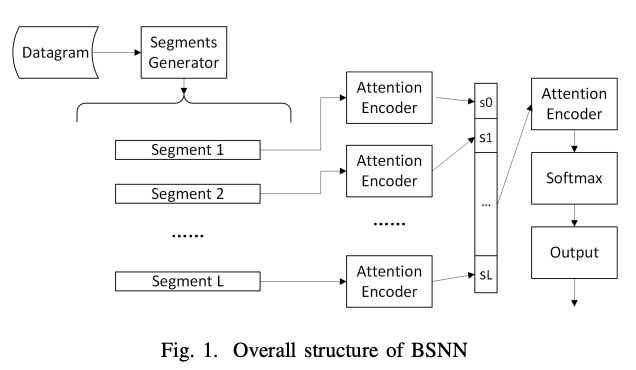Network Traffic Classification with Deep Learning
EBSNN and BSNN - Novel neural network architectures for automated network traffic classification
This research introduces innovative deep learning approaches for network traffic classification, addressing the fundamental challenge of automatically identifying network protocols and applications. The work encompasses two major contributions: the Byte Segment Neural Network (BSNN) and its extended version (EBSNN), both designed to handle the complexity of modern network environments.
Research Objectives
The primary goal is to advance network traffic classification through:
- Automated Feature Learning: Eliminating manual feature engineering requirements
- Protocol Agnostic Design: Handling both traditional and novel network protocols
- Real-time Classification: Enabling efficient packet-level and flow-level analysis
- Production Deployment: Implementing solutions in real-world network environments
Technical Approach
The research employs several innovative neural network architectures:
Byte Segment Neural Network (BSNN)
- Packet Segmentation: Dividing packets into header and payload segments
- Recurrent Processing: Using RNNs with attention mechanisms for segment encoding
- Multi-class Support: Handling multiple protocol classifications simultaneously
- Novel Protocol Detection: Identifying previously unseen network applications
Extended Byte Segment Neural Network (EBSNN)
- Enhanced Architecture: Building upon BSNN with improved feature extraction
- Side-channel Learning: Incorporating header information for better performance
- Flow-level Analysis: Examining multiple packets for comprehensive classification
- Attention Mechanisms: Focusing on relevant packet segments for classification
Key Outcomes
This research has achieved:
- 95.82% average F1-measure in multi-classification for five protocols
- Superior performance over traditional ML and packet inspection methods
- Novel protocol detection capabilities for emerging applications
- Multiple publications in top-tier venues (TDSC, IWQoS, Information Sciences)
Impact
The contributions advance network management and security:
- Intrusion Detection: Better identification of malicious network traffic
- Network Management: Automated traffic classification for QoS and monitoring
- Security Enhancement: Improved detection of network anomalies
- Protocol Evolution: Support for emerging network protocols and applications
Related Publications
- EBSNN: Extended Byte Segment Neural Network for Network Traffic Classification (IEEE TDSC 2021)
- Byte Segment Neural Network for Network Traffic Classification (IEEE/ACM IWQoS 2018)
- Novel Dynamic Multiple Classification System for Network Traffic (Information Sciences 2019)

Deep learning-based network traffic classification system analyzing packet segments for automated protocol identification.